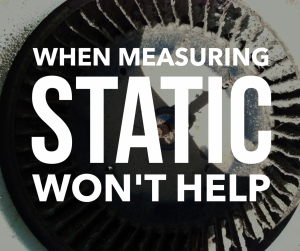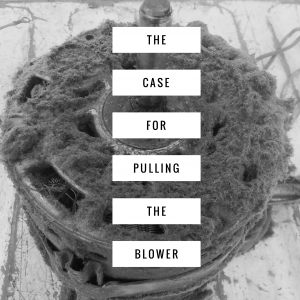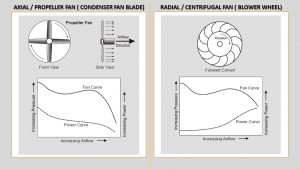BACK
 Electric Heat & Blower Interlock
Electric Heat & Blower Interlock
 Does your Kitchen Exhaust Suck?
Does your Kitchen Exhaust Suck?
 Why Measuring Static First Isn’t Always Productive
Why Measuring Static First Isn’t Always Productive
 Low Airflow – Beyond the Obvious
Low Airflow – Beyond the Obvious
 Adiabatic Cooling, Blower Settings, and Why You Care
Adiabatic Cooling, Blower Settings, and Why You Care
 The Case For Pulling The Blower Housing
The Case For Pulling The Blower Housing
 Blowers, Props, and How They Behave (or Misbehave)
Blowers, Props, and How They Behave (or Misbehave)
 Fan (Blower) Efficacy
Fan (Blower) Efficacy
 Q&A – Evap Placement – Short #221
Q&A – Evap Placement – Short #221
 What Is Up With Blower Amps & Watts w/ Steve Rogers
What Is Up With Blower Amps & Watts w/ Steve Rogers
#blower
Tech Tips:

In residential air handler/fan coils, it is common to use a high-voltage interlock between the blower and the electric heat strips to ensure that the blower comes on whenever the heat is on. The problem is that it CANNOT work the other way around where the heat comes on with the blower. Heat strips are […]
Read more
Have you ever been tasked with installing the exhaust duct for a kitchen hood? I have, and when doing so, I wondered how to size the duct run correctly. Since I had a basic understanding of how airflow works, I knew that there had to be a limit on the resistance the fan can handle; […]
Read more
There is a big move in residential and light commercial HVAC toward measuring static pressure regularly during commissioning, service, and maintenance. Don't get me wrong… Measuring static pressure is VERY important. The challenge comes in when techs begin taking measurements without understanding where to take them, what they mean, or worse: they use measurements as […]
Read more
Every now and then, a tech will call me and give me the same story of woe. They're working on a system and have the following readings: Low superheat Low suction pressure Low head pressure They'll reassure me that the system airflow is correct. So, what could possibly be wrong? I'll ask how they could […]
Read more
Just so you don't get bored and quit reading, let's get straight to the point. When the blower runs for more than a few minutes after the system has cycled off in cool mode, the air may continue to be “cooler” (lower sensible temperature) coming out of the supply. However, the heat content of the […]
Read more
When I started in the trade in 1999, there were still many oilable blower motors in service. As part of the maintenance, we would remove the housing and oil the motor. We would also vacuum the motor and wipe it down. As oilable motors have become extinct, I see fewer and fewer techs pulling the […]
Read more
Fan laws and fan curves are a deep subject with a lot of nuance and variation. Just to get our heads around the subject, let's focus on two different types of fans that we see all the time in HVAC: the prop/axial type and the radial/centrifugal type. Centrifugal/Radial As we increase the pressure differential across […]
Read more
For those of you who use the MeasureQuick app for system diagnosis and performance testing, you may have noticed the “fan efficacy” results and wondered what it is. It is simply the CFM output of the system divided by the wattage used by the blower. It is only for the blower motor and has nothing […]
Read moreVideos:
Podcasts:

In this short podcast, Bryan talks about evaporator coil placement based on a question submitted by a listener, John. Evap coil placement differs in furnace applications versus air handlers. When we use air conditioners with furnaces, we usually put evaporator coils on the positive side to protect the heat exchanger from rusting out during […]
Read more
Bryan Orr and Steve Rogers dive deep into measuring power consumption in HVAC blower motors, particularly focusing on the differences between PSC (Permanent Split Capacitor) and ECM (Electronically Commutated Motor) technologies. The discussion stems from a question raised at an educators' conference about the accuracy of clamp-on meters in measuring blower motor watt draw, […]
Read more







